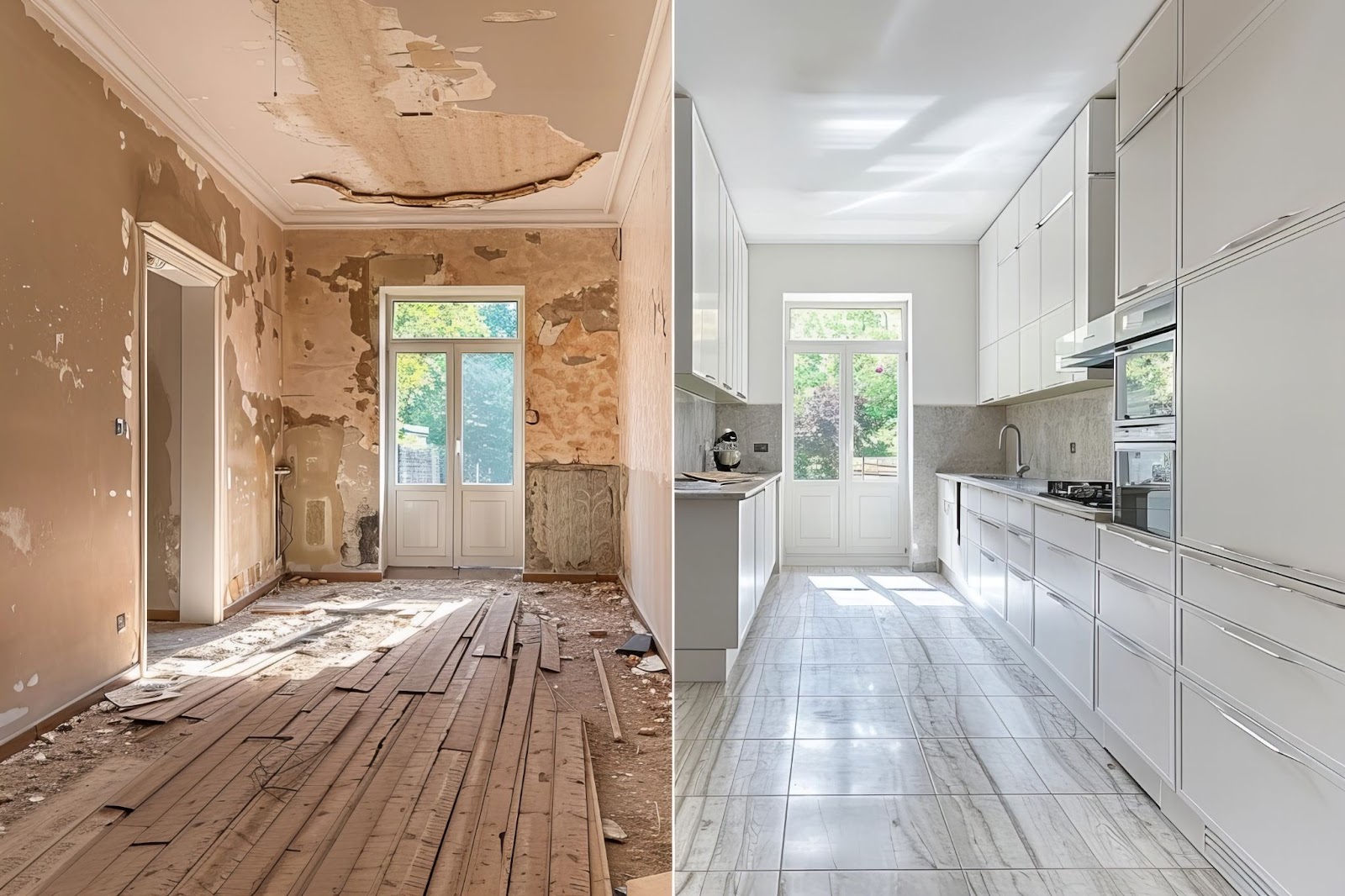Choosing the Right Strategy for Your Investment Goals
When it comes to real estate investing, the right strategy makes all the difference. Investors in Dallas-Fort Worth frequently choose between two popular approaches: buy-fix-sell (also known as fix-and-flip) and buy-fix-rent. While both methods involve purchasing fixer-upper properties and strategic renovations, each delivers unique advantages suited to different investor goals.
At RFP Homes, we’ve helped countless investors choose the right strategy for their objectives. Let’s dive into each method, understand their benefits and challenges, and help you decide which aligns with your vision of real estate success.
Strategy 1: Buy-Fix-Sell (The Fix-and-Flip)

Buy-fix-sell involves buying distressed real estate or undervalued properties, renovating them strategically, and quickly selling them for a profit. It’s ideal for investors looking to rapidly grow their capital and reinvest in new opportunities.
Pros of Buy-Fix-Sell:
-
Fast Profits: Flips often turn around within months, allowing investors to quickly reinvest profits into new deals.
-
High Returns Potential: Expert renovations in high-demand neighborhoods can yield impressive returns, especially in active markets like DFW.
-
Short-Term Commitment: Investors can quickly test strategies, pivot market areas, and minimize long-term exposure to market volatility.
Cons of Buy-Fix-Sell:
-
Tax Implications: Short-term capital gains taxes can reduce your net profits significantly compared to long-term holds.
-
Hands-On Management: Renovations need constant oversight, managing contractors, timelines and unforeseen expenses.
-
Market Risks: Short-term investors must closely track market conditions; a sudden downturn or miscalculated costs can erode profit margins quickly.
Who Should Consider Buy-Fix-Sell?
Investors who enjoy fast-paced transactions, direct involvement in renovation projects, and short-term financial gains should strongly consider fix-and-flip opportunities. If rapid capital accumulation aligns with your goals, this strategy can deliver substantial, frequent returns.
Strategy 2: Buy-Fix-Rent (Long-Term Rentals)
The buy-fix-rent method involves purchasing distressed properties, performing renovations, and renting them out for steady, passive income. This long-term investment strategy is ideal for those seeking consistent cash flow and significant wealth accumulation over time.
Pros of Buy-Fix-Rent:
-
Consistent Monthly Income: Rental properties generate steady cash flow month after month. It’s a great way to cover your expenses while building wealth over time.
-
Long-Term Wealth Through Equity: Your tenants are essentially paying down your mortgage for you. Over time, your equity grows, even if the market cools.
-
Appreciation Over Time: Hold onto the property long enough, and you’re likely to see value appreciation, especially in hot DFW markets like the ones RFP Homes specializes in.
-
Passive Income Potential: With the right property management setup, a rental portfolio can bring in passive income while you focus on scaling or other deals.
Cons of Buy-Fix-Rent:
-
Longer Timeframe for ROI: Profits are realized gradually through ongoing cash flow rather than quick flips, requiring patience and sustained oversight.
-
Property Management Responsibilities: Rentals require consistent maintenance, tenant management and regular property upkeep.
-
Potential Vacancy Periods: Vacancies can briefly impact your cash flow and profitability, requiring contingency plans and strategic tenant acquisition.
Who Should Consider Buy-Fix-Rent?
Investors who prioritize stable monthly income, long-term wealth growth, tax efficiencies, and a more hands-off approach to wealth building are prime candidates for the buy-fix-rent strategy. If you prefer predictable, long-term financial security over short-term profit chasing, rentals are likely your strongest choice.
Choosing the Best Strategy for Your Goals
Deciding between buy-fix-sell and buy-fix-rent boils down to several personal factors:
-
Financial Goals: Do you want rapid capital accumulation (flip) or consistent passive income (rent)?
-
Time Commitment: Flips require intensive short-term management, while rentals need steady, long-term oversight.
-
Risk Tolerance: Higher-risk tolerance aligns well with flips, while risk-averse investors may prefer rentals.
-
Market Outlook: Current and forecasted market conditions should guide strategy selection. Strong, appreciating markets support both strategies, though differently.
How RFP Homes Supports Your Investment Strategy
At RFP Homes, we connect Dallas-Fort Worth investors with exclusive off-market properties ideal for both fix-and-flip and rental strategies. Our experienced team of investment real estate agents helps you evaluate property potential, renovation opportunities and projected returns.
By partnering with RFP Homes, you gain:
-
Exclusive Deals: Access homes ideal for profitable flips or high-cash-flow rentals on our marketplace, which is 100% free!
-
Transparent Transactions: Clear, investor-friendly processes without hidden fees.
-
Expert Analysis: Strategic insights, accurate ARV estimations, and guidance through renovations.
-
Tailored Advice: Personalized recommendations aligned with your specific investment goals.
Whether you're drawn to rapid flip profits or long-term rental income, RFP Homes ensures you have the right properties, tools and advice to succeed.




